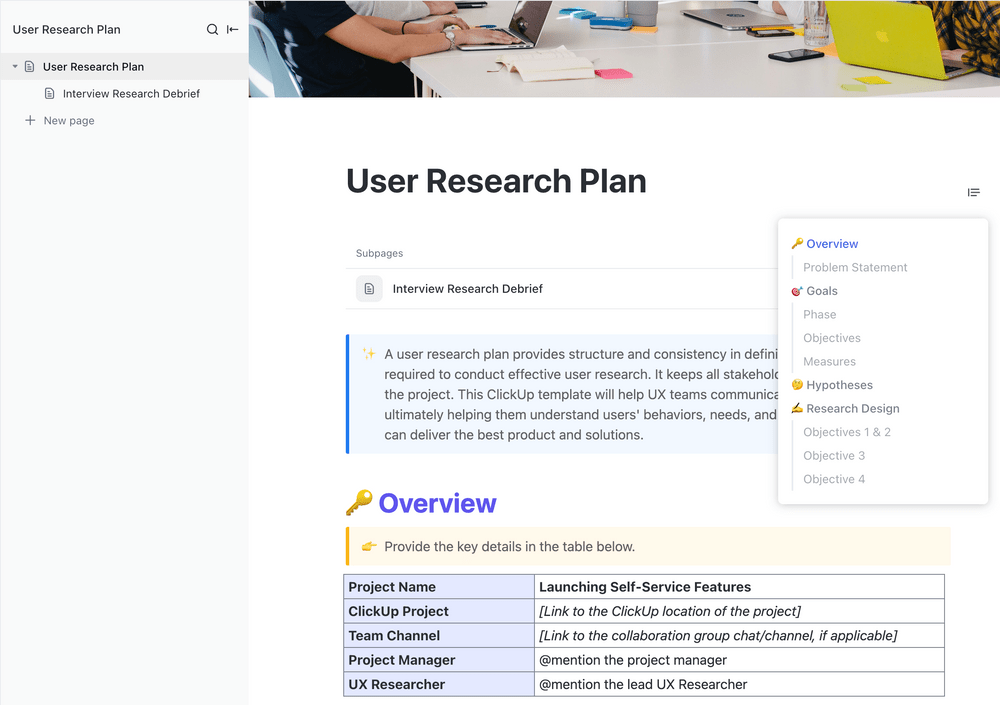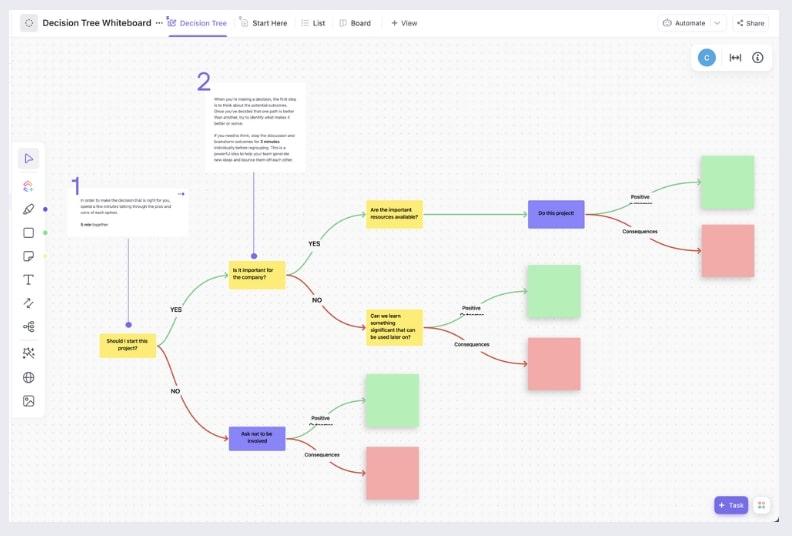What is a Project Sponsor? Roles & Responsibilities of Project Sponsors

Sorry, there were no results found for “”
Sorry, there were no results found for “”
Sorry, there were no results found for “”
Where does a project begin and where does it end? With a project sponsor.
Anything from building the Golden Gate Bridge to throwing a birthday party can be considered a project. Whatever the nature of the project, it involves numerous stakeholders throughout its lifecycle.
Of them all, we’d argue that the most important one is the project sponsor. Let’s see how.
A project sponsor initiates the project and approves deliverables. They are a business stakeholder responsible for planning and delivering a successful project. They often belong to the senior leadership team, with significant influence and authority, even though they don’t have any direct managerial responsibility for the project itself.
For a services organization, a project sponsor might belong to an external entity, typically the client. A project sponsor is internal within a product organization, sometimes known as the project owner.
As both the project sponsor and project manager are leadership roles, they are often confused with each other. Let’s clarify the differences first.
| Project sponsor | Project manager |
| Senior leader in the organization | Leader of the project, typically not as senior as the project sponsor |
| Can be internal or external | Typically internal to the project-delivering organization |
| Responsible for strategic activities and deliverables | Responsible for day-to-day management of the project |
| Initiates the project | Executes the project |
| Approves the project | Approves tasks within the project |
While the project sponsor differs from the project manager in distinct ways, their collaboration is fundamental to the project’s success.
A sponsor defines the goals and scope of the project while a project manager executes it. They track project metrics such as time to market or customer satisfaction.
On the other hand, the project manager tracks project-level metrics such as developer productivity and code quality, which contribute to high-level business metrics.
A sponsor approves the budget, timelines, etc., but the project manager decides if they need additional resources and makes those requests.
Together, a sponsor and manager are responsible for project management. A project’s success requires them to work together to understand each other’s priorities.
‘Stakeholder’ is an umbrella term used for anyone involved in the project. This can be a team member, supervisor, manager, partner, vendor, customer, government authority, or any intermediary.
In that sense, a project sponsor is also a project stakeholder. However, not all stakeholders are sponsors.
Project sponsorship is more than just paying for it. The project sponsor acts as a liaison between business and tech. They offer insights and guidance from a business perspective. They will guide the execution team about the customer, organization, business strategy, and go-to-market plans.
Let’s say a retail company comes to a technology company to develop a point of sale (POS) solution. The project sponsor, a senior leader within the retail company, will brief the tech company about the product’s users, workflow, integration requirements, etc.
While they might not specify the technical requirements, they are responsible for ensuring the product meets business needs.

Throughout the project, they ensure a seamless flow of information between stakeholders. They connect team members with the resources and experts they need.
For example, they might connect the user research team with the right target audience to conduct surveys or monitor behavior.
A project sponsor is responsible for setting objectives and identifying success metrics. Once the project team returns with the plan, they review the scope and approve the kick-off.
From time to time, they conduct reviews and retrospectives with the project team to ensure they stay on track. They also actively eliminate roadblocks along the way. They are accountable for project performance.

They make high-level decisions about the project budgets and project direction. They are also responsible for approving big requests from the project team for additional resources, deadline extensions, etc.
Project managers can build decision trees to help sponsors make important decisions, outlining the implications of these decisions.
A project sponsor holds the authority to approve project deliverables. They verify if the deliverable meets the technical and business requirements. A project needs its sponsor’s sign-off on project closure and payments.
Several of these roles and responsibilities might overlap with a project manager or any other stakeholder. So, let’s first clarify the differences.
The role of a project sponsor isn’t as commonly seen as you would a project manager. Considering the strategic nature of the project sponsor’s role, it is often overlooked.
In some cases, it is also weakly defined. The role of a project sponsor is piled on a senior leader already holding various other responsibilities. This only hinders the success of the project. Here’s how.
Business alignment: Whether you’re building technology or designing a new logo, project sponsors are important to ensure that the project meets business needs.
Relationship management: A project sponsor maintains healthy relationships with key stakeholders such as the client, vendors, and government authorities. They enable effective project collaboration.
Approvals and funding: They are in charge of approving budgets, releasing funds, and negotiating additional requests, if any.
Conflict resolution: When there is a high-level difference of opinion, a project sponsor builds consensus and makes difficult decisions. For example, if there is ambiguity in how a feature is defined, causing confusion among the tech teams, the project sponsor helps clarify. They play a crucial role in ensuring the project doesn’t stall.
Championing the cause: They champion the project and its purpose among senior leadership and the board, bringing visibility and engagement from key stakeholders. They ensure that the project gets the recognition it deserves.
Now that we know the overall role and purpose of a project sponsor let’s look into their responsibilities throughout the various stages of the project: Initiation, planning, execution, and project closure.
The project sponsor responsibilities in initiating the project include:
Sometimes, they appoint the project manager and guide them through hiring and onboarding team members.

Once the project is initiated, the sponsor acts as a project champion. They are no longer involved in the nitty-gritty activities. They steer the project planning phase and drive it to execution.
Here, the project sponsor role is even more limited. Yet, they work closely with the project manager to ensure smooth execution.
A project sponsor closes the project. They are responsible for:
Every project manager works with sponsors regularly, at least monthly, if not weekly. However, their relationship is not straightforward.
The project manager collaborates with the project sponsor on information-sharing, understanding business requirements, and solving problems. The role of project sponsors is to set the project manager up for success.
Yet, project sponsors are senior leaders with more authority than the manager. The project manager presents progress, outcomes, and data for review. The project manager reports to the sponsor in this capacity, even if this is not a manager-subordinate relationship.
Navigation this relationship can be complex. Here are ways project managers can work effectively with project sponsors.

First and foremost, the project sponsor needs visibility. They need to know how the project will be executed. Use a comprehensive project management software like ClickUp to organize the project. With ClickUp, you can:
If you’re an independent agency or freelancer, your client is likely to be your project sponsor. In such cases, try project management software for small businesses to organize yourself.
Use ClickUp to forecast project requirements. Then, present your plans to the project sponsor and get their approval. Once you’ve set up the project on ClickUp, use the Gantt chart view to visualize it over time.
Use ClickUp Whiteboard to explain complex topics. Use ClickUp Mind Maps to create logical paths and demonstrate workflows.
A project sponsor expects the knowledge they’ve shared with the project manager and the initial team to be carefully transferred to every team member/stakeholder. To ensure this:
No project sponsor wants information falling through the cracks. Use ClickUp project management to build transparency and clarity of communication.
Turn on notifications on the app or via email so the project sponsor never misses an update.
Every project sponsor loves good documentation. Use ClickUp Docs to write well-formatted documentation for every feature. Connect them to the tasks, so you’ll never lose them in the haystack.

Keep your project sponsor informed on your progress even before they ask. Use ClickUp Dashboards for real-time reporting with reports for:
If your project sponsor requests specific reports, build custom charts for whatever you need right within your project management tool.
Depending on how hands-on the project sponsor is, they would need updates of varying details regularly. Customize the granularity and frequency of updates with ClickUp. Give their guest account access to adjust their updates by themselves.
A project sponsor will walk the walk with you from the beginning to the end. Use ClickUp to start the project with confidence, execute it efficiently, and end it with pride.
Typically, project managers spend inordinate amounts of time making reports for project sponsors every month. Eliminate duplicate work. Effectively manage the projects and collaborate with the sponsor all in one place, on ClickUp!
Try ClickUp for free now.
© 2025 ClickUp